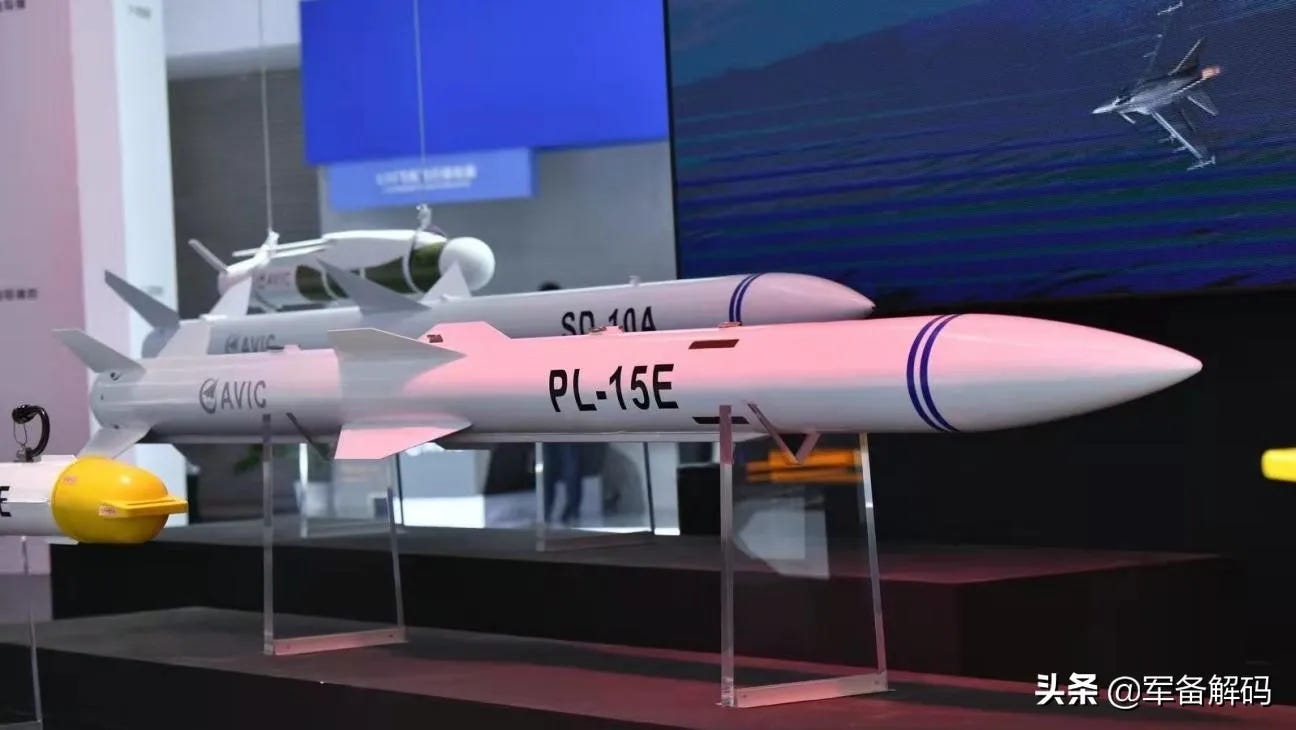Special Edition | Beyond 145km: The Real Story of the PL-15 Missile Strike
What is China saying about Reuters' report on PL-15E missile's range?
China’s PL-15E redraws the air combat map
It’s the kind of question that gets whispered in back rooms in New Delhi, debated in Jakarta’s procurement meetings, and shouted on Weibo: Did a Chinese-made missile just change the rules of the air?
On Saturday, Reuters dropped a bombshell report detailing a massive nighttime air battle on May 7 — the largest in decades — between India and Pakistan. Buried inside the 1,400-word blow-by-blow was a data point that’s rattling defense circles:
Pakistan’s Chinese-made J-10C fighters launched PL‑15 missiles that struck Indian Rafale jets from roughly 200 kilometers away. Yes — the same Rafales that were supposed to be India’s airpower crown jewels.
The real shocker? Indian intelligence reportedly believed those PL‑15s — specifically the export version, the PL‑15E — could only reach 150 km. That bad call may have cost them one of their most advanced fighters.
Beijing keeps it cool, but the Global Times can’t help itself
Officially, Beijing’s Ministry of National Defense stuck to its usual tightrope walk: arms exports are “not directed at any third party,” China “calls for restraint,” and everything’s being done “to promote regional peace.”
But Global Times — that semi-official barometer of Beijing’s true mood — had other ideas.
Quoting military expert Zhang Xuefeng, the paper boasted:
“PL‑15E 的最大射程相比以往导弹有极大的提升。”
“The PL‑15E’s maximum range represents a major leap beyond previous missiles.”
Then came the technical flex. Global Times reminded everyone that PL‑15E uses a hybrid guidance system — inertial nav, satellite correction, datalink, and active radar homing. The kind of feature list that doesn’t just look good on a slide deck, but kills planes in the dark at standoff range.
And just to pour salt in Dassault’s wounds, they added:
“这类作战展示的不仅是导弹性能,更是情报链、数据链优势。”
“What this engagement demonstrated wasn’t just missile capability — it was the superiority of the kill chain and datalink integration.”
Translation: it wasn’t brute force — it was brains, too.
Weibo had a field day
If Global Times was smug, Weibo was euphoric.
One viral post with tens of thousands of reposts declared:
“国产霹雳‑15E 导弹参战确认,超远距离击杀印军战机,在印巴冲突中打出国威。”
“China’s PL‑15E confirmed in combat, long-range kill of Indian warplane — national prestige delivered on target.”
Another user added:
“成飞+洛阳导弹院组合大卖特卖吧!”
“Chengdu Aircraft + Luoyang Missile Academy = sales are about to explode!”
One particularly technical thread made waves by pointing out how the J-10C likely launched without even turning its radar on — leveraging datalink feeds from a Swedish Erieye AEW&C system flying safely in Pakistani airspace. If true, that suggests a fully networked kill chain, something India is still cobbling together with its patchwork of French, Russian, and domestic platforms.
But the quote that best captured the online sentiment?
“不是射程惊人,是这导弹24小时无人车间生产,量产即优势。”
“The shocking part isn’t just the range — it’s that this missile can be built in fully automated factories, 24 hours a day. Mass production is the real edge.”
So what’s the actual range?
Here’s where it gets murky. Publicly, the PL‑15E’s range is capped at 145 km, the figure shown at Zhuhai Airshow 2021. That’s consistent with export restrictions. But analysts — and now, hard evidence — suggest this is only a baseline.
The domestic PL‑15 is widely believed to exceed 200–300 km, depending on launch altitude, closing speed, and radar support. With dual-pulse solid rocket motors and a datalink connection to AEW&C or ground control, even the export variant likely stretches far beyond its sticker spec.
If Pakistan’s missiles were fired from roughly 200 km out, as both Reuters and Indian officials allege, then we’re looking at one of two possibilities:
Pakistan’s PL‑15Es are not actually capped at 145 km.
Even if capped, they’re being used in optimal launch envelopes, with mid-course corrections, to hit targets far beyond what Indian planners anticipated.
Either way, it’s a big win for Beijing — and a bigger loss for Delhi’s assumptions.
What this means for the Rafale — and everyone watching
Let’s be clear: this doesn’t mean the Rafale is obsolete. It means air combat has changed. In a BVR (beyond-visual-range) fight where who sees first, shoots first, and networks best wins — the French jet flew blind.
And everyone else is watching. Indonesia, which was considering Rafales, is now reportedly weighing a J-10CE purchase. As one Indian defense source told Reuters: “The problem wasn’t the plane. The problem was the assumptions.”
The jury on Rafale’s performance is still out but the Reuters’ report now helps clarify what really may have gone down.
Which brings us back to the original question: how far can it really go?
The answer: far enough to change procurement decisions in Southeast Asia. Far enough to rattle defense planners from Paris to Tel Aviv. And far enough that China didn’t even have to fire the missile themselves to make the point.


